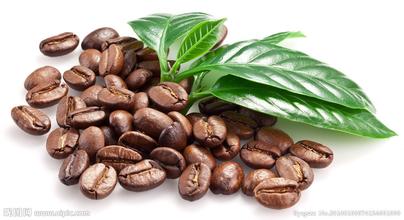Introduction to the varieties of Grinding scale of Coffee Bean by Brazilian Yega Chuefei Flavor description method
Introduction to the varieties of Grinding scale of Coffee Bean by Brazilian Yega Chuefei Flavor description method
The so-called "Yega Chuefei" refers to strong aromas of jasmine, lemon or green citric acid, as well as sweet peaches, almonds and tea. To borrow the taste experience of a certain scholar, there is only one sentence: "Coffee entrance, flowers in full bloom!" Like a flower touches the comfort of taste buds and olfactory cells in the nasal cavity. In addition to the flower scent, the delicate mellow thickness is like silk, and the touch is wonderful. Most coffee beans are washed with water, but a small number of absolute crystal beans deliberately use the sun method to enhance the charming fruit aroma and mellow thickness. These mountain villages are foggy, like spring all year round, with a gentle breeze in summer, cool but not hot, rain but not damp, and no cold damage in winter, giving birth to a unique "regional flavor" of citrus and flower fragrance. Coffee trees are mostly planted in farmers' own backyard or mixed with other crops in the field, and the yield per household is not much, which is a typical rural coffee. Almost all of the award-winning beans come from the above-mentioned coffee villages and communities.
Yega Xuefei's coffee trees were planted by European monks (somewhat similar to Belgian monks who advocated planting wheat and brewing beer), and were later transferred to farmers or cooperatives. Yega Xuefei is actually constructed by surrounding coffee communities or cooperatives, including Edido, Hafusha, Hama and Bdon near the Fog Valley.
Mantenin coffee beans
Origin: Sumatra, Indonesia, Mantenin (unique flavor): Mantenin from Sumatra is one of the few Arakabi species with large particles, but poor production management and baking will reflect the beans. It was regarded as the best before the Blue Mountains appeared. Characteristics: fragrant-strong, sweet-medium, acid-weak, alcohol-medium, bitter-strong
Mocha coffee beans
Ethiopia-Mocha (special flavor): for the origin of coffee, small particles, dry, turquoise, with a special aroma and sour taste. Ethiopia grades NO.1~NO.8 according to the blending rate of defective beans. Characteristics: fragrance-strong, sweet-medium, acid-medium, alcohol-strong, bitter-soft
Java coffee beans
Origin: Java, Indonesia
Coffee is grown in Arabica. After baking, the bitter taste is extremely strong and the aroma is very light, without sour taste. The bitterness and mellowness of Java coffee, coupled with the sweetness of chocolate syrup, make Java coffee more mellow and palatable and very popular with women!
Colombian coffee beans
Colombia-Columbia (highest quality): the second largest producer in the world. Coffee beans are light green, large granules, with heavy flavor, whether single drink or mixed are very suitable. Characteristics: incense-strong, sweet-medium, acid-medium, alcohol-strong, bitter-weak.

Important Notice :
前街咖啡 FrontStreet Coffee has moved to new addredd:
FrontStreet Coffee Address: 315,Donghua East Road,GuangZhou
Tel:020 38364473
- Prev

When the drip-filter brewing method is adopted, the American type drip-filter coffee machine is used for coffee beans.
When using the drip brewing method, the American drip filter coffee machine is used to fill the lower glass ball with boiling hot water, depending on the size of the coffee cup used to determine the amount of hot water, the average cup of coffee needs about 140~150c.c. Then fix the upper pot with the filter cloth on the base, pour in the ground coffee bean powder, and heat the water in the pot by alcohol lamp or other heat source.
- Next

Where does Pacamara come from? flavor description of coffee beans introduction of varieties produced by taste treatment method
Where does Pacamara come from? coffee bean flavor description, taste treatment, regional variety introduction Pacamara is another example of becoming famous with the help of COE events. In the 90s of the 20th century, some farmers in the Chalatenango producing area of South Song in Charat, El Salvador began to grow Pracamara. In 2006, a farm in this producing area took part in the competition with Pacamara and got the second place. 2007,
Related
- Guji coffee producing area of Guji, Ethiopia: Humbela, Shakiso, Wulaga
- What is the most expensive variety of Qiloso in BOP multi-variety group?
- How to store the coffee beans bought home?
- Why are Yemeni coffee beans so rare now?
- Ethiopian Sidamo all Red Fruit Sun Sun Santa Vini Coffee beans
- SOE is mostly sour? What does it mean? Is it a single bean? what's the difference between it and Italian blending?
- Is Italian coffee beans suitable for making hand-brewed coffee?
- How to choose coffee beans when making cold coffee? What kind of coffee beans are suitable for making cold coffee?
- Just entered the pit to make coffee, what kind of coffee beans should be chosen?
- Can only Japan buy real Blue Mountain Coffee? What are authentic Jamaican Blue Mountain coffee beans?

